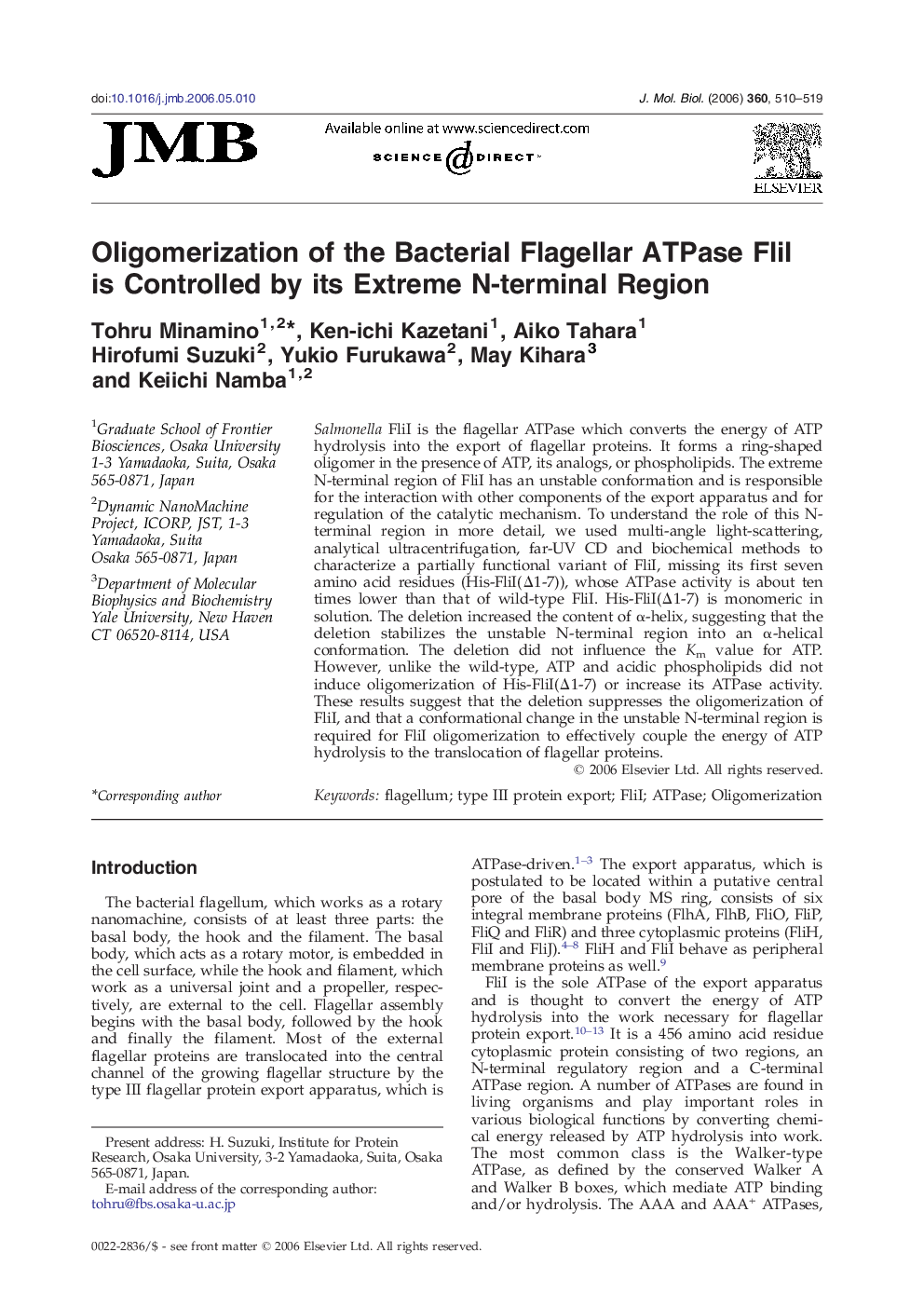| Article ID | Journal | Published Year | Pages | File Type |
|---|---|---|---|---|
| 2189502 | Journal of Molecular Biology | 2006 | 10 Pages |
Salmonella FliI is the flagellar ATPase which converts the energy of ATP hydrolysis into the export of flagellar proteins. It forms a ring-shaped oligomer in the presence of ATP, its analogs, or phospholipids. The extreme N-terminal region of FliI has an unstable conformation and is responsible for the interaction with other components of the export apparatus and for regulation of the catalytic mechanism. To understand the role of this N-terminal region in more detail, we used multi-angle light-scattering, analytical ultracentrifugation, far-UV CD and biochemical methods to characterize a partially functional variant of FliI, missing its first seven amino acid residues (His-FliI(Δ1-7)), whose ATPase activity is about ten times lower than that of wild-type FliI. His-FliI(Δ1-7) is monomeric in solution. The deletion increased the content of α-helix, suggesting that the deletion stabilizes the unstable N-terminal region into an α-helical conformation. The deletion did not influence the Km value for ATP. However, unlike the wild-type, ATP and acidic phospholipids did not induce oligomerization of His-FliI(Δ1-7) or increase its ATPase activity. These results suggest that the deletion suppresses the oligomerization of FliI, and that a conformational change in the unstable N-terminal region is required for FliI oligomerization to effectively couple the energy of ATP hydrolysis to the translocation of flagellar proteins.
